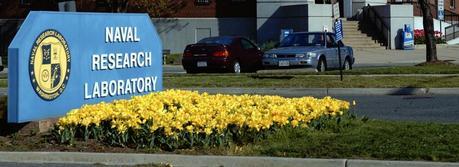
Photo/Image provided courtesy of the Naval Research Laboratory.
The benthic microbial fuel cell (BMFC) was developed some time ago by The Naval Research Laboratory to power marine-deployed applications. This battery draws power from organic matter residing in sediment on the seafloor, oxidizing it with oxygen in overlying water. This power source is non-depleting and therefore perfectly suited to power hard to access sensors and similar devices. Dr. Lenny Tender, a research chemist at the Naval Research Laboratory (NRL), explains the mechanics of his benthic microbial fuel cell. A recent recipient of the Arthur S. Fleming Award, Tender is an internationally recognized leader in microbial fuel cell research.

Dr. Lenny Tender, an NRL research chemist (Credit: Jamie Hartman, U.S. Naval Research Laboratory)
Dr. Lenny Tender, a research chemist at the Naval Research Laboratory (NRL), has co-invented a device, known as a benthic microbial fuel cell, that persistently generates electrical power in marine environments. The fuel cell is being developed to persistently operate oceanographic sensors.
“It’s able to generate electricity just like a windmill,” Tender said. “It’s an energy harvester.”
The fuel cell draws electricity from the sea floor, creating an interface between the sediment on the bottom of a marine environment and the overlying water.
“At the bottom of the marine environment we have sediment, and the mud at the bottom of a harbor, river, lake or the ocean actually has quite a bit of fuel in it,” says Tender. “If you can think of anything that has ever lived in the marine environment, phytoplankton, sea creatures, etc., when they die they settle on the sea floor. And like leaves on the lawn, they start decomposing. This represents a pretty potent fuel source. What we do is put electrodes into this already made battery.”
Tender’s research in microbial fuel cell development has significant implications to future Navy capabilities with respect to persistent in-water Intelligence, Surveillance, and Reconnaissance (ISR) operations for warfighters in riverine, estuarine, and close-in littoral environments.
With funding from the Bill and Melinda Gates Foundation, Tender has expanded his microbial fuel cell research to include wastewater treatment. Whereas conventional treatment processes consume significant power – an issue that confronts the Department of Defense and developing countries alike – microbial fuel cells may enable power generation from wastewater treatment.
“Waste water treatment conventionally requires a lot of energy,” Tender said. “But the inherent energy represented by the organic matter which is the fuel in the waste water can be used to generate electricity.”
Expanding on this idea, Tender says there is an opportunity to flip the equation upside down and to actually think of waste water treatment plants as power stations generating power.
Branch head at NRL’s Center for Bio/Molecular Science and Engineering and a recent recipient of the Arthur S. Fleming Award, Tender is an internationally recognized leader in microbial fuel cell research.

